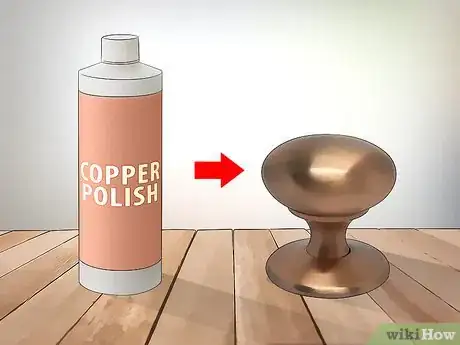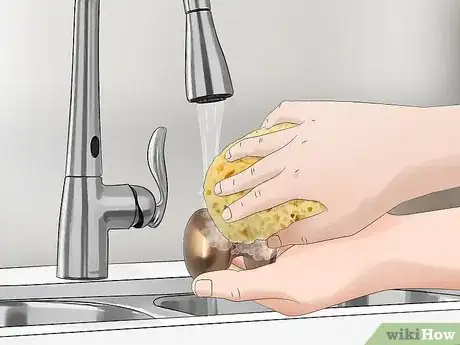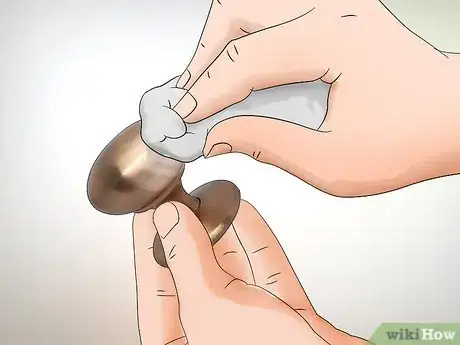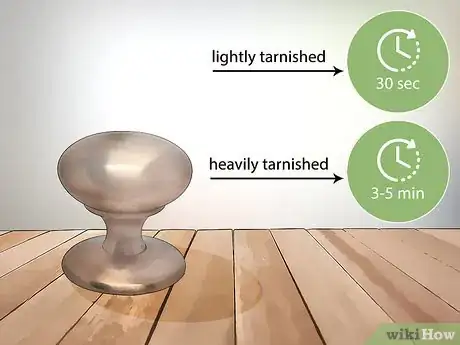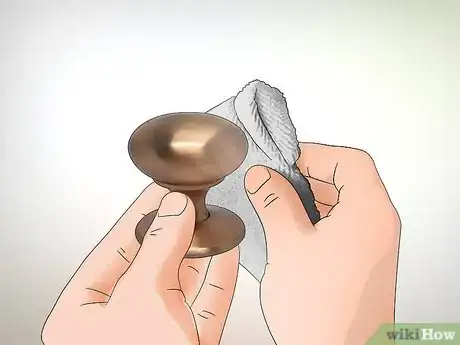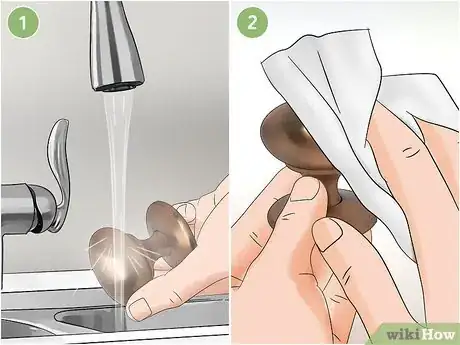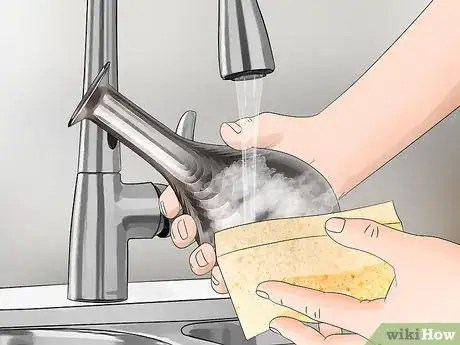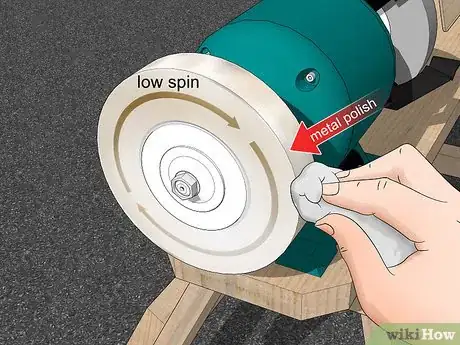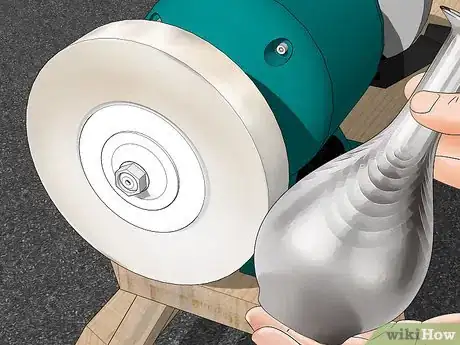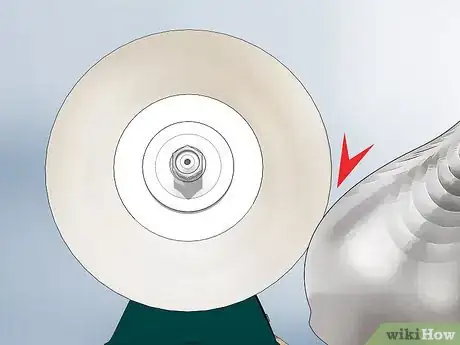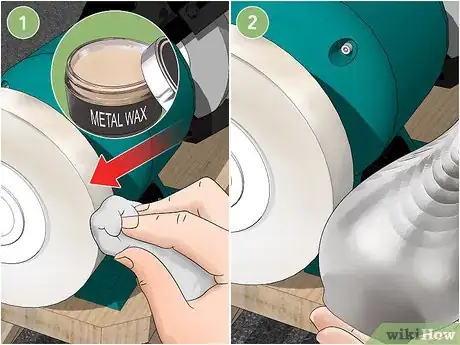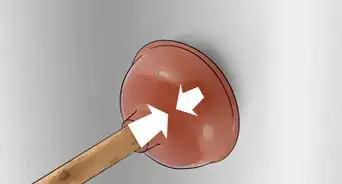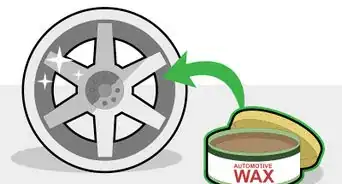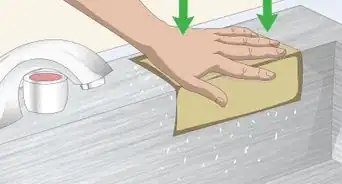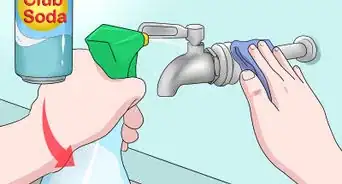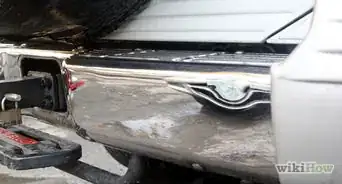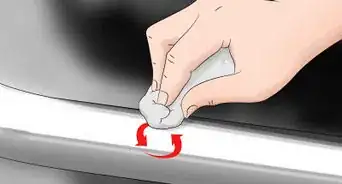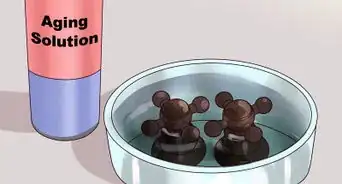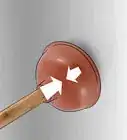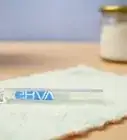This article was co-authored by Elias Weston. Elias Weston is a Cleaning Specialist and the Founder of Seatown Cleaners in Seattle, Washington. Elias specializes in helping clients find cleaning services with instant booking and flexible pricing. Seatown Cleaners offers standard, deep, and move-in/out cleaning services using green products and cleaning techniques. Every cleaner is thoroughly vetted and every cleaning is backed by a 100% money-back guarantee.
There are 7 references cited in this article, which can be found at the bottom of the page.
This article has been viewed 76,894 times.
Metal, whether it’s made of steel, copper, brass, or silver, has an unfortunate tendency to tarnish and stain over time. Luckily, it’s pretty easy to remove these stains by coating metal with a specialized cleaner, then rubbing it down with a cloth or using a buffing wheel to polish it. Alternatively, you can also use a variety of different all-natural compounds to polish metal.
Steps
Choosing the Right Polish
-
1Go with a commercial polish made for the specific metal you’re polishing. For example, if you are cleaning metal bakeware, cleaning specialist Elias Weston highlights that a "great option is oxalic acid. Bar Keeper's friend is a cleaning powder composed of oxalic acid, and will remove almost any tough stain from bakeware." Likewise, there are multiple metal cleaning and polishing compounds that are designed to be used on specific objects and types of metals. Using one of these compounds is your best bet if you want the best results possible and don’t mind spending a little extra money.[1]
- As another example, you can use copper cream or copper polish to polish a copper doorknob in your house.
- You can buy this type of compound at any hardware or home improvement store.
-
2Use baking soda and aluminum foil if you don’t have metal polish. You can pour 1 cup (240 mL) of boiling water into a dish lined with aluminum foil and add 1 tablespoon (14 grams) of baking soda and 1 tablespoon (17 grams) of salt to make a homemade silver polish. Soak your silver in this polish for about 30 seconds, then rub it down with a cloth to polish it.[2]
- To make this paste even more effective, add 1⁄2 cup (120 mL) of white vinegar to it before you add the silver.
Warning: Be sure to use tongs to remove the silver from the polish, since the boiling water will have made it extremely hot.
Advertisement -
3Polish copper or brass with a paste made of vinegar and baking soda. Cleaning specialist Elias Weston instructs, "Mix ¼ cup of baking soda and ¼ cup of vinegar into a paste. Using a microfiber cloth, apply the paste and buff the copper. Rinse with warm water and dry with a clean cloth." This is a useful polish to use on small un-lacquered pieces of copper or brass. [3] If you don't have any vinegar at home, Weston suggests, "you can also use lemon juice, as the acid works similarly to vinegar by dissolving the oxidized copper."
- You can also make this compound with flour instead of baking soda, although it won’t be as effective at removing tough spots.[4]
- You can also use lemon juice. Squeeze half a lemon onto a sponge and add about 1 teaspoon (5 grams) of salt on top to make a scented polishing compound. Note that this isn’t as effective a polish as a vinegar and baking soda paste, although it certainly smells nicer.[5]
-
4Use vinegar or olive oil to polish stainless steel. White vinegar, olive oil, and even baby oil can be effectively used to polish stainless steel if you don’t have a specialized cleaner around. Simply coat your piece of steel with one of these cleaners, then wipe the piece down with a microfiber cloth to polish it.[6]
- Applying baby oil to your stainless steel after you’ve polished it is also a good way to remove any fingerprints you may have left on it.
Polishing Your Metal by Hand
-
1Clean your metal piece with liquid dish soap and rinse it off. It’s important to get all the dirt and grime off of your metal piece before you can polish it. Be sure to dry the piece off with a towel before moving on to the next step.[7]
- For best results, use a non-abrasive liquid detergent that won’t harm your metal.
- If your piece has non-metal elements attached to it, such as a wooden back to a metal picture frame, be sure to detach these elements before cleaning and polishing the metal.
-
2Coat the surface of your object with your polish compound. Dip a sponge or cloth into your compound, then use it to smear the polish over the surface of your metal object. If you’re polishing multiple small pieces of metal, you can also dip them entirely into your polish compound.[8]
- Perform this step in a well-ventilated area, especially if you’re using a specialized cleaner, since the polish may give off strong fumes as you apply it.
-
3Allow more tarnished objects to soak for 3-5 minutes. Heavily tarnished pieces may need the extra time for the polish to be effective. Otherwise, you only need to leave the polish on the metal for about 30 seconds.[9]
-
4Wipe the object down with a damp microfiber cloth. If the metal is one that has a wood-like grain, like stainless steel or copper, wipe along with the grain in order to get all of the compound off. Use a little extra pressure on any areas that are heavily tarnished.[10]
- If your cloth gets dirty with tarnish during this process, replace it with a second, clean cloth to avoid spreading the tarnish back onto the metal.
-
5Rinse the metal and dry it off with a clean towel. Use warm water to remove any compound residue left over on the metal. Cleaning specialist Elias Weston emphasizes, "make sure to rinse thoroughly after cleaning to remove any remnants [of polish]."[11]
Using a Buffing Wheel
-
1Clean the surface of your metal piece with liquid dish soap. Use a sponge, warm water, and liquid dish soap to clean off dirt and grime before applying the polishing compound. Rinse it with warm water and dry the metal off with a clean towel.[12]
- Use a non-abrasive dish soap detergent that won’t damage the metal.
-
2Apply your polishing compound to the surface of the buffing wheel. Spin the wheel on a bench grinder or electric drill at a low speed and lightly press the compound onto the wheel to apply it. You only need to apply a small amount of compound to the wheel in order for it to work.[13]
- Note that you don’t need to soften or moisten your polishing compound before applying it to the buffing wheel. The heat and friction that the wheel generates will do this for you.
-
3Hold the metal piece up to the buffing wheel as it’s turning. Turn the wheel at a speed of 8000 RPM. Gently hold the metal against the wheel, applying only slight pressure, in order to polish it. For best results, press the metal piece against the buffing wheel below its center.[14]
- Apply as little pressure as possible. The movement of the buffing wheel will be very effective at polishing your metal, even with minimal pressure.
-
4Move the metal across the wheel at a downward angle for best results. You’ll get the best polish if you keep the metal in constant motion as you’re buffing it. Holding it at a downward angle will also make your polishing more precise.[15]
- You don’t need to move the metal very fast. A deliberate, steady motion across the wheel will be best.
-
5Reapply polishing compound to the wheel as necessary. The process of polishing your metal will cause the compound on the buffing wheel to wear off. If your metal is still tarnished when this happens, all you have to do is add more compound to the wheel and continue polishing.[16]
- Depending on the size of your metal piece, you probably won’t need more than 1-2 applications of polishing compound on your buffing wheel.
-
6Apply a coat of metal wax or lacquer to your metal to seal it. A clear metal lacquer will give your metal a shiny luster after you finish polishing it. Put a thin layer of lacquer on your buffer wheel and apply it the same way you did the polishing compound.[17]
Things You’ll Need
- Commercial or homemade polishing compound
- Liquid dish soap
- Microfiber cloth or sponge
- Towel
- Buffing wheel
- Metal wax or lacquer (optional)
References
- ↑ https://www.realsimple.com/home-organizing/cleaning/dusting-polishing/guide-polishing
- ↑ https://www.apartmenttherapy.com/the-best-way-to-polish-clean-silver-210819
- ↑ https://www.housebeautiful.com/uk/lifestyle/cleaning/news/a132/how-to-keep-metal-gleaming/
- ↑ https://www.tipsbulletin.com/how-to-polish-metal/
- ↑ https://www.tipsbulletin.com/how-to-polish-metal/
- ↑ https://www.housebeautiful.com/uk/lifestyle/cleaning/news/a132/how-to-keep-metal-gleaming/
- ↑ https://www.realsimple.com/home-organizing/cleaning/dusting-polishing/guide-polishing
- ↑ https://www.realsimple.com/home-organizing/cleaning/dusting-polishing/guide-polishing
- ↑ https://www.apartmenttherapy.com/the-best-way-to-polish-clean-silver-210819
- ↑ https://www.housebeautiful.com/uk/lifestyle/cleaning/news/a132/how-to-keep-metal-gleaming/
- ↑ https://www.goodhousekeeping.com/home/cleaning/q-and-a/a21150/best-way-to-polish-brass/
- ↑ https://www.realsimple.com/home-organizing/cleaning/dusting-polishing/guide-polishing
- ↑ https://www.kmstools.com/blog/metal-polishing-101/
- ↑ https://www.kmstools.com/blog/metal-polishing-101/
- ↑ https://www.kmstools.com/blog/metal-polishing-101/
- ↑ https://www.kmstools.com/blog/metal-polishing-101/
- ↑ https://www.kmstools.com/blog/metal-polishing-101/
